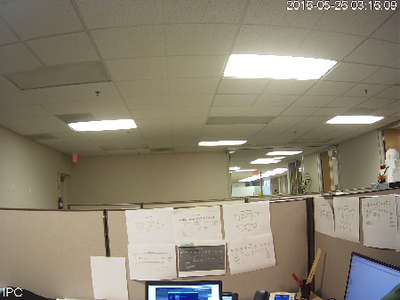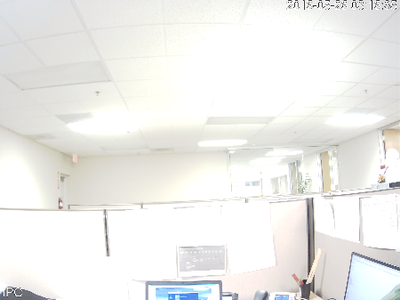Notice: Firmware Links Under Maintenance We are currently undergoing maintenance on all firmware links. If any links are inaccessible, please email or contact Tech Support for the firmware. We appreciate your patience during the maintenance, thank you for your understanding.
Difference between revisions of "Troubleshoot/What Is Focal Length Aperture Gain Angle of View"
| Line 4: | Line 4: | ||
* The focal length of a lens is the distance, in millimeters, between the sensor (focal plane) and the optical center of the lens. It is not a measurement of the actual length of a lens, but a calculation of an optical distance from the point where light rays converge to form a sharp image of an object to the digital sensor or 35mm film at the focal plane in the camera. The focal length of a lens is determined when the lens is focused at infinity. The focal length tells us the angle of view—how much of the scene will be captured—and the magnification—how large individual elements will be. The longer the focal length, the narrower the angle of view and the higher the magnification. The shorter the focal length, the wider the angle of view and the lower the magnification. | * The focal length of a lens is the distance, in millimeters, between the sensor (focal plane) and the optical center of the lens. It is not a measurement of the actual length of a lens, but a calculation of an optical distance from the point where light rays converge to form a sharp image of an object to the digital sensor or 35mm film at the focal plane in the camera. The focal length of a lens is determined when the lens is focused at infinity. The focal length tells us the angle of view—how much of the scene will be captured—and the magnification—how large individual elements will be. The longer the focal length, the narrower the angle of view and the higher the magnification. The shorter the focal length, the wider the angle of view and the lower the magnification. | ||
| + | [[File:FocalLength.png|500px]] | ||
Aperture | Aperture | ||
Revision as of 19:52, 25 May 2016
What is Focal Length, Aperture, Gain, Angle of View?
Focal Length
- The focal length of a lens is the distance, in millimeters, between the sensor (focal plane) and the optical center of the lens. It is not a measurement of the actual length of a lens, but a calculation of an optical distance from the point where light rays converge to form a sharp image of an object to the digital sensor or 35mm film at the focal plane in the camera. The focal length of a lens is determined when the lens is focused at infinity. The focal length tells us the angle of view—how much of the scene will be captured—and the magnification—how large individual elements will be. The longer the focal length, the narrower the angle of view and the higher the magnification. The shorter the focal length, the wider the angle of view and the lower the magnification.
Aperture
- Aperture refers to the opening of a lens's diaphragm through which light passes. It is calibrated in f/stops and is generally written as numbers such as 1.4, 2, 2.8, 4, 5.6, 8, 11 and 16. The lower f/stops give more exposure because they represent the larger apertures, while the higher f/stops give less exposure because they represent smaller apertures. This may seem a little contradictory at first but will become clearer as you take pictures at varying f/stops. The lower the f/stop—the larger the opening in the lens—the less depth of field—the blurrier the background. The higher the f/stop—the smaller the opening in the lens—the greater the depth of field—the sharper the background.
Gain
- Gain is an electronic way to boost the brightness of your video images. When shooting in low light conditions (e.g. at night) the iris will be fully open at f1.6 but, the camera may still needs more light to produce a picture. If you cannot light the scene then the only way to brighten the image is to electronically boost it with GAIN. The great thing about gain is that you will be able to see in the dark.
Note the examples from below.
This is Gain exposure from 1-20
This is Gain exposure from 40-60
This is Gain exposure from 80-100
Angle of View
- The viewing angle is akin to the “portion of the scene” that the lens can capture. Viewing angle is measured in degrees. The more angular your lens is, the greater portion of the scene you can capture with your lens. The more you zoom into a scene, the lower portion of the image that will be captured in a photo. A lens with an effective focal length of 300mm provides a viewing angle of about 8.15 degrees. When you use one, you fill the sensor with a much smaller portion of the scene. This is why you perceive being closer to your target. By contrast, if you were using an 18mm (76 degree angle) lens the same portion of the scene would occupy a much smaller size frame, making you feel like you are much farther away from the target of your shot. Lenses are categorized and marketed based upon their focal length. However the really important measure of a lens is the angle of view. The typical photographer’s mind envisions a shot based upon the angle of view, not the focal length. Of course, every viewing angle corresponds to a specific focal length. Speaking of one is like using a synonym for the other. However, having a command of your craft and developing the skill to realize your vision on your final work requires that you understand how these work together.
Super wide angle: these create a “fisheye” effect and can cover a viewing angle of 180 degrees or more. These are typically in the 8mm to 12mm range.
Wide Angle: Lenses covering a viewing angle of between 110 and 60 degrees, representing an effective focal length of 10mm to about 25mm.
Standard/Medium: Lenses covering a viewing angle of 60 to 25 degrees, representing an effective focal length of 25mm to about 65mm.
Telephoto: Lenses which cover a viewing angle of 25 to 10 degrees, which corresponds to a focal length of 65mm to 160mm.
Super telephoto: Lenses which cover a viewing angle of 10 to 1 degrees, ie, 160mm to 600mm focal length.




